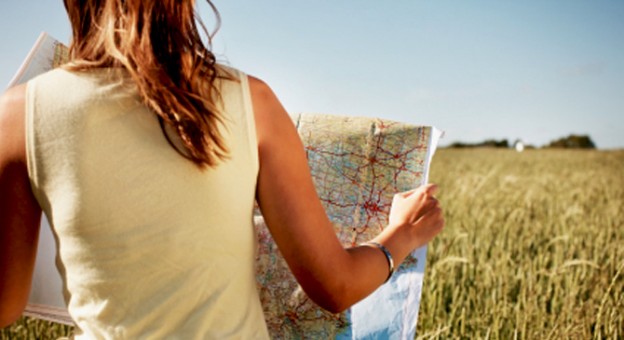If you fail to plan, you plan to fail…
I’m training in earnest now for my Mont Blanc trip and recently headed out on a 7.2 mile hike in Harriman State Park with a printed, downloaded description of a nice loop that would have my friend and I back to my car in 4.5 hours. Stocked with fruit, raw granola, water, and our written, downloaded-from-the-internet directions but no map, we set out on a gorgeous spring day on a moderate to strenuous hike. Despite all expert recommendations to always carry a map, we decided instead to just go with the written instructions, thinking they seemed clear enough. I convinced myself that a map wouldn’t really be necessary next to these meticulous notes…. Ha! Famous last thoughts….
Beautiful though it was, we took one wrong turn at the half-way point and lost our trail. Rather than the black on white blaze we were following, we were suddenly on an orange trail with no idea where that trail would lead. As we walked I thought about how if I had just planned a little more in advance, by getting a map and reading the description of the hike against the map, this wouldn’t be happening. I also thought that if I want to keep myself from being a casualty on Mont Blanc, I better start taking this seriously and begin planning ahead.
Planning ahead is one of those simple tools that takes just minutes to do and can make all the difference between success and failure. Your to-do list is an example of planning ahead and if you think how your day might go without having an idea of what needs to get done first, then you know the importance of this simple practice.
Yet, so many of us don’t do this. Particularly when it comes to food.
Having a plan can make the difference between wanting and intending. You might want to eat healthfully in order to lose weight, but unless you intend it (a minor but powerful mental shift), you will likely live with frustration as your appetite and habits get in the way of your goals.
Waiting until you are hungry to then decide what to eat, makes it much more challenging to make the healthiest choice. Once your blood sugar drops, your mind can feel unclear, and your body is more likely to seek out the quickest relief in the form of a more refined and carby option. This is particularly true at lunch, when most people need to find food and eat within the constraints of time. But if you spend a few seconds at the beginning of the day or even the night before, deciding what you will eat, you are far more apt to stick with that plan when the time comes and in this way, stay true to your health goals.
Click here to see my video on intelligent snacking
Planning ahead begins to create neural pathways to your intended goal. As you map out your course, your brain begins to recognize the intention behind your desire and organize itself in a way that helps you get there. Mapping out your plan is like laying out the yellow brick road that you then only need to walk on to begin manifesting your desires. It is a powerful practice for a successful life and can applied to all endeavors from overall happiness to your career, love-life and yes, even your diet and health goals.
It can also be applied to training hikes in the woods. Had I had a map that day to help me chart my course I would not have gotten lost. I thought I could pull it off with the instructions I had even though carrying a map on a hike is Hiking 101. I thought I could figure it out, the same way my clients resist the idea of planning ahead, because they feel that it should be easy enough to make the right choice even in a pinch. But sometimes you need to map your course in order to insure you are on the right track to find your way to your intended goal.
After hiking with massive uncertainty for about 90 minutes, we took a path that eventually got us back to my car. It was a relief to finally find our way. But it took so much more time to get there than it would have had we only spent a little time charting our course.


